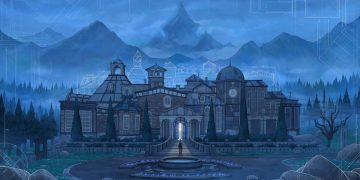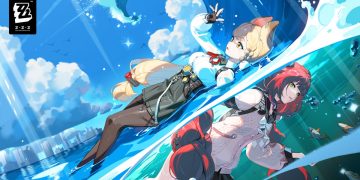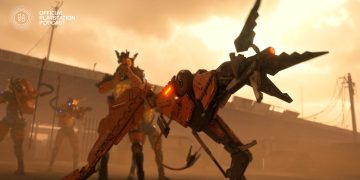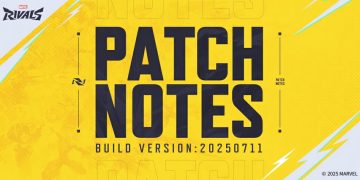Indiana Jones has always been about more than just the stories, heroes, or music. It’s the unique vibe of the films, born from a blend of clever choreography, cinematic techniques, and an unmistakable tone that fans have adored for decades. Translating that special essence into a video game is no small feat.
For the team at MachineGames, developing Indiana Jones and the Great Circle meant tackling this challenge head-on. They faced the daunting task of crafting a state-of-the-art game while ensuring it captured the iconic allure of the films. Striking that balance was tricky—crafting a gripping game that genuinely echoes the action and ambiance of the Indiana Jones saga.
Chatting with the developers at MachineGames, it’s intriguing to dive into their process of blending today’s gaming innovations with classic filmmaking tricks. The result? A game that meets, if not exceeds, the expectations of die-hard fans and newcomers alike.
Take, for instance, a scene that might seem almost inconsequential at first glance. In ‘Indiana Jones and the Raiders of the Lost Ark,’ there’s this memorable moment where Indy, confronted by a formidable swordsman, decides to bypass the intricate choreography of a typical battle with a simple, unexpected gunshot, turning a potential boss fight into perfectly timed humor.
Turning that kind of humor into a gameplay element is typically tricky. Normally, you’d expect a full-blown boss fight with complex attack patterns and multiple health bars. Yet, that exact scene demonstrates the humor and pace unique to Indy’s adventures.
“The humor in that scene is quintessential Indy,” shares Creative Director Axel Torvenius. “It highlights the comedic timing and cleverness that fans adore. We’ve embraced this spirit, ensuring our combat scenarios stay engaging and echo that Indy-humor we all love.”
This commitment reflects MachineGames’ broader strategy: understanding what makes the series magical while adapting it to a form audiences can interact with and shape themselves. And as you delve into the game, it’s clear this effort touches every aspect of its design.
From the outset, MachineGames aspired to capture the authentic ‘80s film aesthetic. “We wanted the game to look and feel like ‘Raiders of the Lost Ark’ did back in the day,” Torvenius mentions. The team meticulously analyzed not just the script but technical details: color palettes, film grading, original sound effects, and even the era’s stunt work. They worked tirelessly to translate these techniques into an interactive medium.
Fascinatingly, the team even adopted some of the original films’ set-building rules: “Games are tricky because you can explore everywhere, often breaking the thoughtfully crafted scene,” notes Torvenius. “But by predicting player movements, we crafted special locations where scenes shine just right.”
In controlled cutscenes, they pushed this further. They brought in cinematographers to recreate authentic camera movements, ensuring every scene echoes the dynamic camera work of an Indiana Jones film.
Sound, needless to say, plays as crucial a role as visuals. The legendary John Williams scores, along with unforgettable sound effects and iconic sounds like the Wilhelm Scream, needed to be just right.
Audio Director Pete Ward dives deep into this process: “Our goal was to capture the essence of Indy’s iconic audio world. We re-watched all the movies to identify must-have elements: the unique whip sound, a faithful voice likeness, and those signature punches and effects.”
They went old-school with sound recording techniques, capturing new sounds that stay true to the original’s ambiance but made them fit for the game setting. They even recreated atmospheric sounds using methods from the films, such as striking leather jackets.
And let’s not forget the soundtrack. MachineGames enlisted composer Gordy Haab, celebrated for his work on Star Wars, to deliver a score that honors John Williams while introducing new thematic elements. The team even recorded at Abbey Road, with some musicians from the original sessions contributing once again.
Crafting an entirely new yet fitting narrative was equally challenging. Lead Narrative Designer Tommy Tordsson Björk describes diving into Indy’s vast lore, employing its richness to weave a tale that feels right at home between the classic films’ timelines.
MachineGames values authenticity in its storytelling and immersive settings, leaning on its previous experiences with cherished franchises to craft a narrative that respects Indy’s adventurous spirit.
When it comes to gameplay, the team focused on transforming film excitement into interactive thrills, utilizing extensive motion capture to bring real dynamism to the action sequences. Executed with stunt professionals, scenes evoke movie magic even within the constraints of a game world.
Combat mechanics were honed to mix fun with skill, capturing those beloved cinematic blows and integrating them into engaging gameplay.
Beyond combat, exploration and puzzle-solving replicate the intriguing allure of movie storytelling. Players are encouraged to explore and creatively interact with the environment, turning everyday items into tools of clever play, a nod to Indy’s unique mix of humor and cleverness.
That memorable swordsman scene in a video game? In Indiana Jones and the Great Circle, it encapsulates what the team aimed for—a faithful yet fresh take on a beloved classic. MachineGames’ dedication to authenticity ensures it feels like a true extension of the Indiana Jones universe, offering excitement, humor, and a sense of discovery that would make any fan of the films feel right at home.
Indiana Jones and the Great Circle will be available on Xbox Series X|S and Windows PC (via Game Pass) or Steam from December 9. Those who opt for the Premium or Collector’s Editions can enjoy it even earlier, starting December 6.














































